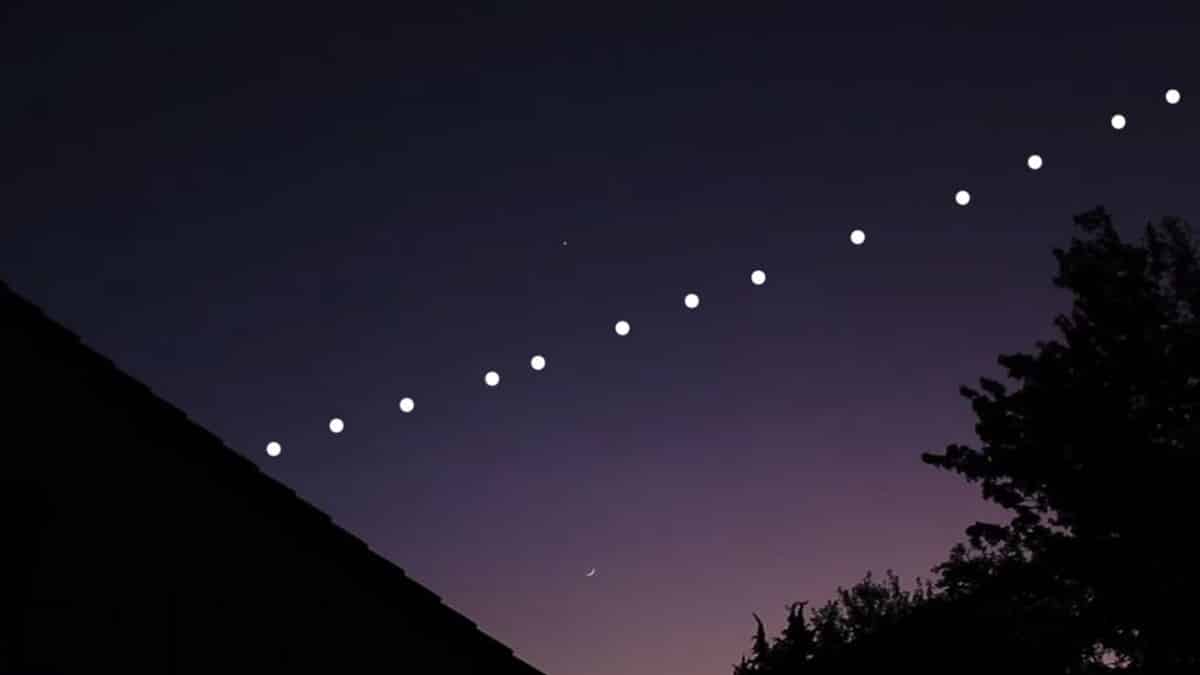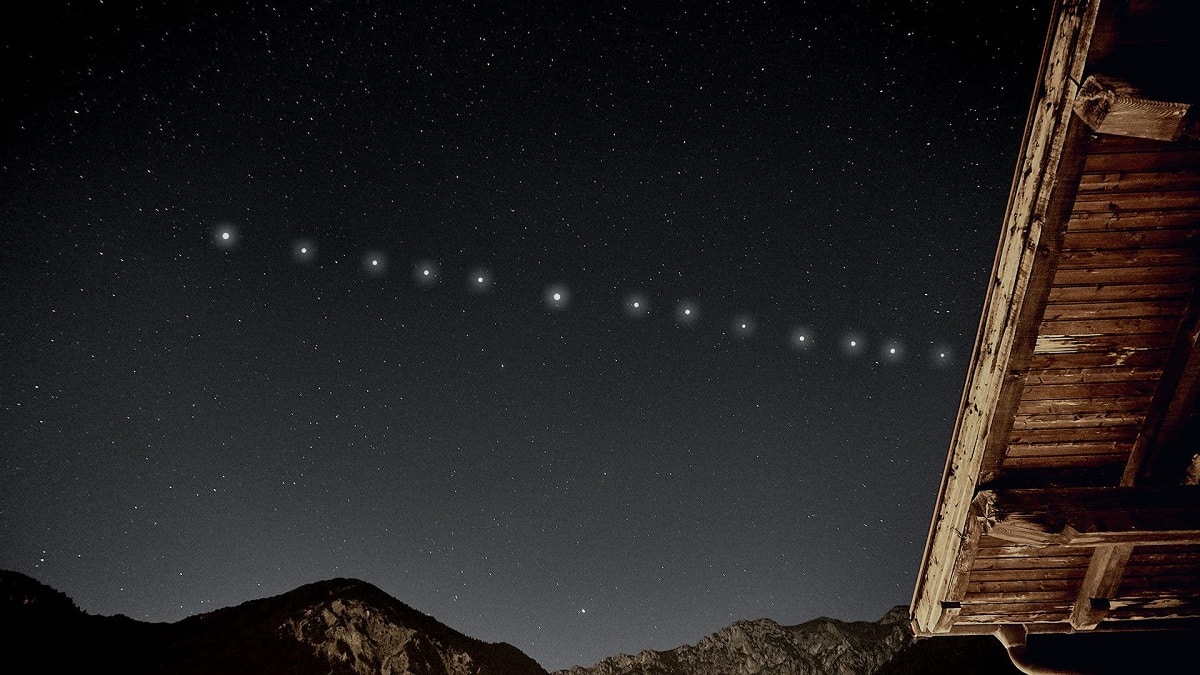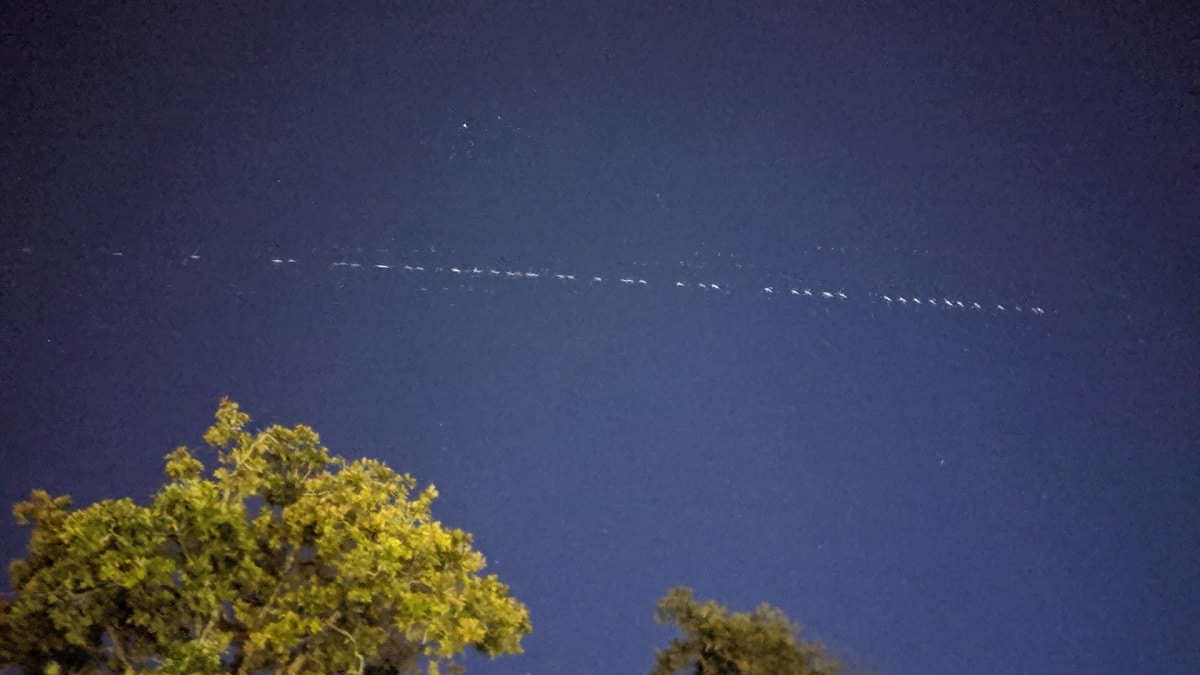
We explain what they are and how to see starlink satellites, a constellation of satellites owned by Elon Musk that aims to bring the internet to any part of the Earth. There may be cases where you can see a constellation of satellites streaking across the sky and you don't know what it is. This technology is totally revolutionary and aims to take the internet to another level.
For this reason, we are going to dedicate this article to telling you how to see the Starlink satellites, what their characteristics and curiosities are.
What is Starlink and its satellites

Starlink is a satellite Internet service developed by Elon Musk's SpaceX. The company's idea is to have around 12.000 satellites in orbit and then pay a monthly fee to connect from anywhere with a device you own. It is not about competing with fiber or 5G connectivity, it is about gaining a foothold among other satellite connectivity companies in areas without fixed network coverage.
Starlink promises speeds of between 50 Mbps and 250 Mbps in its standard service, or between 150 and 500 Mbps in its most expensive mode, both with latencies between 20 and 40 milliseconds. The system includes a kit that you have to install in your home to receive satellite signals, so it is not a network that you can connect to from your phone, but a network for your home.
The idea is that the antenna in your connectivity kit communicates with the Starlink satellites for data exchange, which is why the company wants to have as many satellites in orbit as possible so that they cover all corners of the planet. for this communication the propagation of electromagnetic waves in a vacuum will be used to send signals.
As stated on the Starlink website, the kit antenna should be placed high up and/or free of obstructions such as trees, chimneys, or utility poles. Any of these obstacles can interfere with the connection and prevent you from connecting.
Regarding the price, Starlink has a rate of 99 euros per month, and the connectivity kit must be purchased for 639 euros. So it's not a particularly cheap alternative either, but it can serve you well in remote areas where being able to connect is crucial.
Key features

Satellites are launched in batches of 60, and the days after launch are the best to view them, because that's when they reflect the most sunlight, and they're still close together, so they're most interesting to watch, like a cartwheel. of Santa Claus rising in the sky. Over time, the satellites move apart and adjust to different altitudes and inclinations, reducing the probability of seeing them.
While ordinary citizens find it interesting to look for satellites in the sky, astronomers consider it silly, since hundreds of satellites have been launched and will reach 42,000 in the future, plaguing many observation centers. His biggest concern is the Rubin Observatory, which will map the entire sky every three days to see what's happening in the sky.
The astronomical community is demanding measures to keep the skies as clean and dark as possible, in stark contrast to putting 30.000 satellites into orbit by 2023, adding to the activity of other companies and the idea of the EU's own fleet making them more difficult. More and more satellites are expected, with the total expected to reach 100.000 in just ten years.
SpaceX has now committed to making changes to prevent these reflections, including using a darker coating to reduce reflectance, also known as albedo, starting in 2020. They also slightly change the tilt and attach to the shields like goggles. sun, which at first glance seems that you do not see them.
When they make changes, every month we can see the moons pass through Spain, at times of the day when the sun gives them enough but it is still night, like after sunset or before sunrise. After each launch, they can almost always be seen without a problem one day, appearing "suddenly" in the sky when the sun's rays begin to hit them, and disappearing once the light stops hitting them. Follow them, there are two ideal places.
How to see Starlink satellites

To see the Starlink satellites, you first need to know when they will pass through your city. To do so, visit the FindStarlink.com website and fill in your country and city name. When you start typing a name, you'll see a list of cities, and if yours doesn't appear, you can choose the closest city.
This will take you to a page that lists the date and time the Starlink satellites will pass over your city. Plus, they'll tell you where they're from and where to look. For example, in the capture you can see that it says from northwest to southeast, which means from northwest to southeast. But most importantly, the data is divided into three lists based on its visibility. The important thing is the list with blue headers, but we tell you what each one means:
- Good Visibility Times: These are times when satellite visibility is good. At this time, if the sky is clear, you will see them go by without any problem because they will be very bright. Therefore, the time to appear on the blue list is always the best.
- Average visibility time: Hours of average visibility. If the sky is clear you should be able to see the satellites most of the time, although you should look closely as they are not as bright. Going to the blue list is recommended, but these yellow list times may also be helpful to you.
- Low visibility time: Time when visibility is low. The satellites will pass, but it is not easy to see them in the sky. It is recommended not to waste too much time during these times.
Therefore, it is advisable to consult the time and date of the sky in a list of times with good visibility, because on those days the satellite will be seen very clearly in the sky. Keep in mind that the site also tells you in English the trajectory that they are going to take, and even the altitude, although on days with good visibility you should have no problems. Remember, you have to look at the sky where there is less light pollution, where there are no lights around and where you can see the stars.
I hope that with this information you can learn more about how to see Starlink satellites and their characteristics.